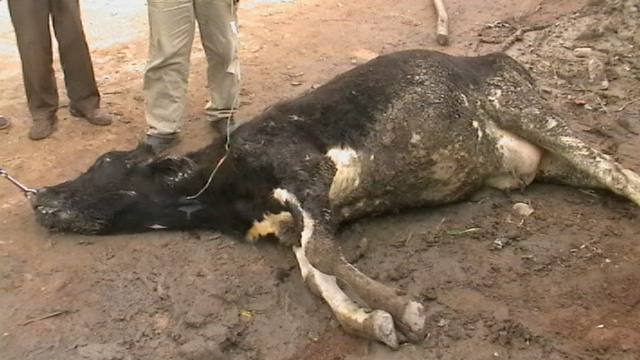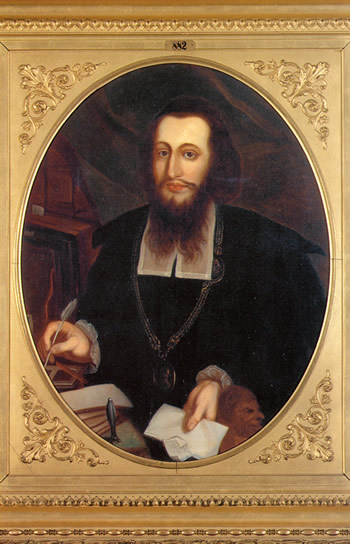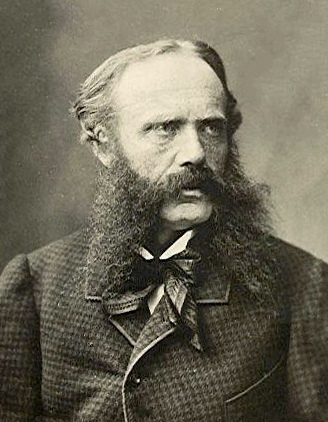|
Nathan Weiss
Nathan Weiss (8 May 1851 – 13 September 1883) was an Austrian physician and neurologist born in Groß Meseritsch (today known as Velké Meziříčí, Czech Republic). His father was the Talmudic scholar Isaac Hirsch Weiss. He studied medicine in Vienna, earning his doctorate in 1874. He worked as secondary physician at the ''Allgemeines Krankenhaus'' in Vienna, and in 1879 became habilitated for internal medicine. Weiss is remembered for pioneer systematic research of the spinal marrow, medulla oblongata and basal ganglia. The eponymous "Weiss's sign" is named after him, which today is usually referred to as "Chvostek's sign". In 1881 he showed a causal relationship between tetany and the removal of goitre. Among his written works is a treatise on tetany (''Über Tetanie'') that is included in Richard von Volkmann's ''Sammlung klinischer Vorträge''. A friend of Sigmund Freud, Weiss committed suicide on 13 September 1883, at the age of 32, shortly after returning from h ... [...More Info...] [...Related Items...] OR: [Wikipedia] [Google] [Baidu] |
Vienna
en, Viennese , iso_code = AT-9 , registration_plate = W , postal_code_type = Postal code , postal_code = , timezone = CET , utc_offset = +1 , timezone_DST = CEST , utc_offset_DST = +2 , blank_name = Vehicle registration , blank_info = W , blank1_name = GDP , blank1_info = € 96.5 billion (2020) , blank2_name = GDP per capita , blank2_info = € 50,400 (2020) , blank_name_sec1 = HDI (2019) , blank_info_sec1 = 0.947 · 1st of 9 , blank3_name = Seats in the Federal Council , blank3_info = , blank_name_sec2 = GeoTLD , blank_info_sec2 = .wien , website = , footnotes = , image_blank_emblem = Wien logo.svg , blank_emblem_size = Vienna ( ; german: Wien ; ba ... [...More Info...] [...Related Items...] OR: [Wikipedia] [Google] [Baidu] |
Tetany (medical Sign)
Tetany or tetanic seizure is a medical sign consisting of the involuntary contraction of muscles, which may be caused by disorders that increase the action potential frequency of muscle cells or the nerves that innervate them. Muscle cramps caused by the disease tetanus are not classified as tetany; rather, they are due to a lack of inhibition to the neurons that supply muscles. Tetanic contractions (physiologic tetanus) are a broad range of muscle contraction types, of which tetany is only one. Signs and symptoms Tetany is characterized by contraction of distal muscles of the hands (carpal spasm with extension of interphalangeal joints and adduction and flexion of the metacarpophalangeal joints) and feet (pedal spasm) and is associated with tingling around the mouth and distally in the limbs. Causes * The usual cause of tetany is a deficiency of calcium. An excess of phosphate (high phosphate-to-calcium ratio) can also trigger the spasms. * Underfunction of the parathyroid gl ... [...More Info...] [...Related Items...] OR: [Wikipedia] [Google] [Baidu] |
1883 Deaths
Events January–March * January 4 – ''Life (magazine), Life'' magazine is founded in Los Angeles, California, United States. * January 10 – A Newhall House Hotel Fire, fire at the Newhall Hotel in Milwaukee, Wisconsin, United States, kills 73 people. * January 16 – The Pendleton Civil Service Reform Act, establishing the United States civil service, is passed. * January 19 – The first electric lighting system employing overhead wires begins service in Roselle, New Jersey, United States, installed by Thomas Edison. * February – ''The Adventures of Pinocchio'' by Carlo Collodi is first published complete in book form, in Italy. * February 15 – Tokyo Electrical Lightning Grid, predecessor of Tokyo Electrical Power (TEPCO), one of the largest electrical grids in Asia and the world, is founded in Japan. * February 16 – The ''Ladies' Home Journal'' is published for the first time, in the United States. * February 23 – Al ... [...More Info...] [...Related Items...] OR: [Wikipedia] [Google] [Baidu] |
Austrian Neurologists
Austrian may refer to: * Austrians, someone from Austria or of Austrian descent ** Someone who is considered an Austrian citizen, see Austrian nationality law * Austrian German dialect * Something associated with the country Austria, for example: ** Austria-Hungary ** Austrian Airlines (AUA) ** Austrian cuisine ** Austrian Empire ** Austrian monarchy ** Austrian German (language/dialects) ** Austrian literature ** Austrian nationality law ** Austrian Service Abroad ** Music of Austria **Austrian School of Economics * Economists of the Austrian school of economic thought * The Austrian Attack variation of the Pirc Defence chess opening. See also * * * Austria (other) * Australian (other) * L'Autrichienne (other) is the feminine form of the French word , meaning "The Austrian". It may refer to: *A derogatory nickname for Queen Marie Antoinette of France *L'Autrichienne (film), ''L'Autrichienne'' (film), a 1990 French film on Marie Antoinette with ... [...More Info...] [...Related Items...] OR: [Wikipedia] [Google] [Baidu] |
Austrian Jews
The history of the Jews in Austria probably begins with the Jewish diaspora, exodus of Jews from History of ancient Israel and Judah#Roman occupation, Judea under Roman occupation. Over the course of many centuries, the political status of the community rose and fell many times: during certain periods, the Jewish community prospered and enjoyed political equality, and during other periods it suffered pogroms, deportations to concentration camps and mass murder, and antisemitism. The Holocaust drastically reduced the Jewish community in Austria and only 8,140 Jews remained in Austria according to the 2001 census, though other estimates place the current figure at 9,000, 15,000, or 20,000 people, if accounting for those of mixed descent. Antiquity Jews have been in Austria since at least the 3rd century CE. In 2008 a team of archeologists discovered a third-century CE amulet in the form of a gold scroll with the words of the Jewish prayer Shema Yisrael (Hear, O Israel! The Lord ... [...More Info...] [...Related Items...] OR: [Wikipedia] [Google] [Baidu] |
Who Named It
''Whonamedit?'' is an online English-language dictionary of medical eponyms and the people associated with their identification. Though it is a dictionary, many eponyms and persons are presented in extensive articles with comprehensive bibliographies. The dictionary is hosted in Norway and maintained by medical historian Ole Daniel Enersen Ole Daniel Enersen (born March 14, 1943, in Oslo, Norway) is a Norwegian climber, photographer, journalist, writer, and medical historian. In 1965 he made the first ascent of the Trollveggen mountain in Romsdalen, Norway, along with Leif Norman .... References External links * Medical websites Medical dictionaries Eponyms {{online-dict-stub ... [...More Info...] [...Related Items...] OR: [Wikipedia] [Google] [Baidu] |
Nervous Diseases
This is a list of major and frequently observed neurological disorders (e.g., Alzheimer's disease), symptoms (e.g., back pain), signs (e.g., aphasia) and syndromes (e.g., Aicardi syndrome). There is disagreement over the definitions and criteria used to delineate various disorders and whether some of these conditions should be classified as mental disorders or in other ways. # *22q13 deletion syndrome A *Abulia *Achromatopsia *Addiction *Acquired brain injury *Agraphia *Agnosia *Aicardi syndrome * AIDS – neurological manifestations *Akinetopsia * Alcohol related brain damage *Alcoholism *Alcoholic dementia *Alien hand syndrome *Allan–Herndon–Dudley syndrome *Alternating hemiplegia of childhood *Alzheimer's disease *Amaurosis fugax *Amnesia *Amyotrophic lateral sclerosis *Acephalia *Aneurysm *Angelman syndrome *Anosognosia *Aphasia *Aphantasia *Apraxia *Arachnoiditis *Arnold–Chiari malformation *Asomatognosia *Asperger syndrome *Ataxia *ATR-16 syndrome *Attention de ... [...More Info...] [...Related Items...] OR: [Wikipedia] [Google] [Baidu] |
Sigmund Freud
Sigmund Freud ( , ; born Sigismund Schlomo Freud; 6 May 1856 – 23 September 1939) was an Austrian neurologist and the founder of psychoanalysis, a clinical method for evaluating and treating psychopathology, pathologies explained as originating in conflicts in the Psyche (psychology), psyche, through dialogue between a patient and a psychoanalyst. Freud was born to Galician Jews, Galician Jewish parents in the Moravian town of Příbor, Freiberg, in the Austrian Empire. He qualified as a doctor of medicine in 1881 at the University of Vienna. Upon completing his habilitation in 1885, he was appointed a docent in neuropathology and became an affiliated professor in 1902. Freud lived and worked in Vienna, having set up his clinical practice there in 1886. In 1938, Freud left Austria to escape Nazi persecution. He died in exile in the United Kingdom in 1939. In founding psychoanalysis, Freud developed therapeutic techniques such as the use of free association (psychology), free a ... [...More Info...] [...Related Items...] OR: [Wikipedia] [Google] [Baidu] |
Richard Von Volkmann
Richard von Volkmann (17 August 1830 – 28 November 1889) was a prominent German surgeon and author of poetry and fiction. Some of his works were illustrated by his son, Hans, a well known artist. Biography He was born in Leipzig on 17 August 1830, the son of physiologist A.W. Volkmann. Richard entered medical school in Berlin and graduated in 1854. In 1867 he was appointed Professor of Surgery and Director of the Surgical Clinic at Halle where he remained until retirement. He was one of the most prominent surgeons of his day. He died in Jena. Achievements * Performed the first excision of carcinoma of the rectum in 1878. * Described Volkmann's Ischaemic Contracture in 1881. * Devised a splint and a spoon which bear his name. * His treatment of articular tuberculosis heralded attempts at preventive surgery. * In 1894 he described three patients with scrotal cancer who worked with paraffin and tar. * He was an early supporter of Joseph Lister, and helped the introduction ... [...More Info...] [...Related Items...] OR: [Wikipedia] [Google] [Baidu] |
Goitre
A goitre, or goiter, is a swelling in the neck resulting from an enlarged thyroid gland. A goitre can be associated with a thyroid that is not functioning properly. Worldwide, over 90% of goitre cases are caused by iodine deficiency. The term is from the Latin ''gutturia'', meaning throat. Most goitres are not cancerous (benign), though they may be potentially harmful. Signs and symptoms A goitre can present as a palpable or visible enlargement of the thyroid gland at the base of the neck. A goitre, if associated with hypothyroidism or hyperthyroidism, may be present with symptoms of the underlying disorder. For hyperthyroidism, the most common symptoms are associated with adrenergic stimulation: tachycardia (increased heart rate), palpitations, nervousness, tremor, increased blood pressure and heat intolerance. Clinical manifestations are often related to hypermetabolism, (increased metabolism), excessive thyroid hormone, an increase in oxygen consumption, metabolic changes in ... [...More Info...] [...Related Items...] OR: [Wikipedia] [Google] [Baidu] |
Chvostek's Sign
The Chvostek sign () is a clinical sign that someone may have a low blood calcium level (a decreased serum calcium, called hypocalcemia). The Chvostek sign is the abnormal twitching of muscles that are activated (innervated) by the facial nerve (also known as Cranial Nerve Seven, or CNVII). When the facial nerve is tapped in front of the ear, the facial muscles on the same side of the face will contract sporadically (called ipsilateral facial spasm). The muscles that control the nose, lips and eyebrows are often the ones that will spasm. These facial spasms are caused by the nerves that control the muscle being easily excited (called hyperexcitability) due to hypocalcemia. Hypocalcemia can be caused by many things, including parathyroid conditions (such as when the parathyroid gland does not function well, called hypoparathyroidism) and vitamin diseases (such as a vitamin D deficiency). Sometimes, the Chvostek sign can be caused by other conditions which interfere with the balanc ... [...More Info...] [...Related Items...] OR: [Wikipedia] [Google] [Baidu] |
Austria-Hungary
Austria-Hungary, often referred to as the Austro-Hungarian Empire,, the Dual Monarchy, or Austria, was a constitutional monarchy and great power in Central Europe between 1867 and 1918. It was formed with the Austro-Hungarian Compromise of 1867 in the aftermath of the Austro-Prussian War and was dissolved shortly after its defeat in the First World War. Austria-Hungary was ruled by the House of Habsburg and constituted the last phase in the constitutional evolution of the Habsburg monarchy. It was a multinational state and one of Europe's major powers at the time. Austria-Hungary was geographically the second-largest country in Europe after the Russian Empire, at and the third-most populous (after Russia and the German Empire). The Empire built up the fourth-largest machine building industry in the world, after the United States, Germany and the United Kingdom. Austria-Hungary also became the world's third-largest manufacturer and exporter of electric home appliances, ... [...More Info...] [...Related Items...] OR: [Wikipedia] [Google] [Baidu] |





